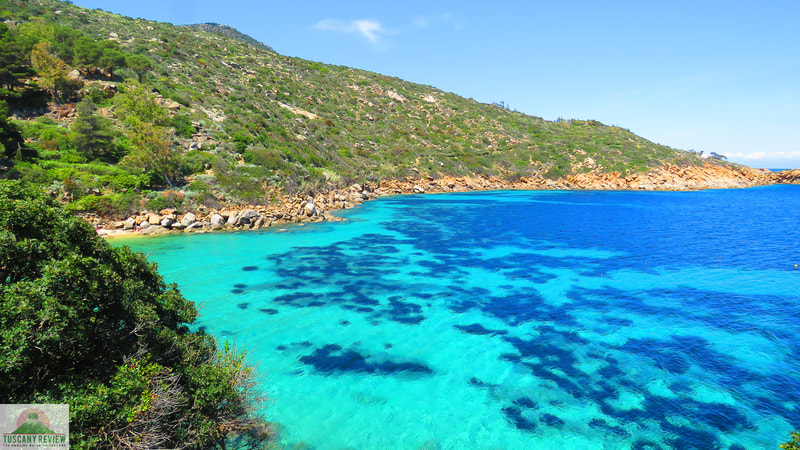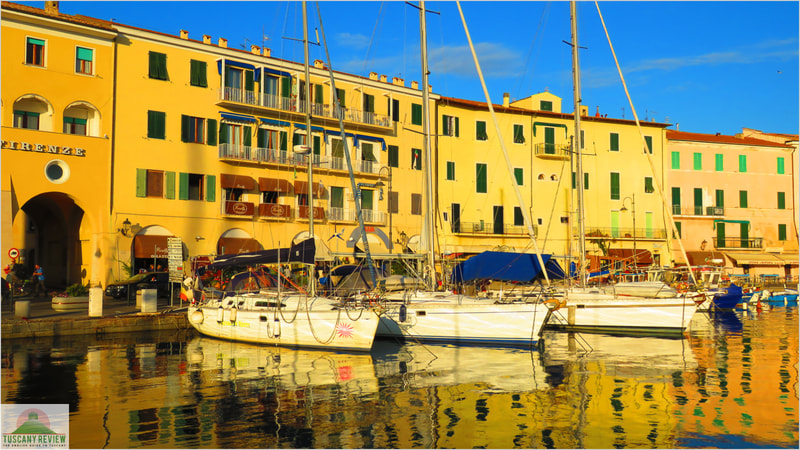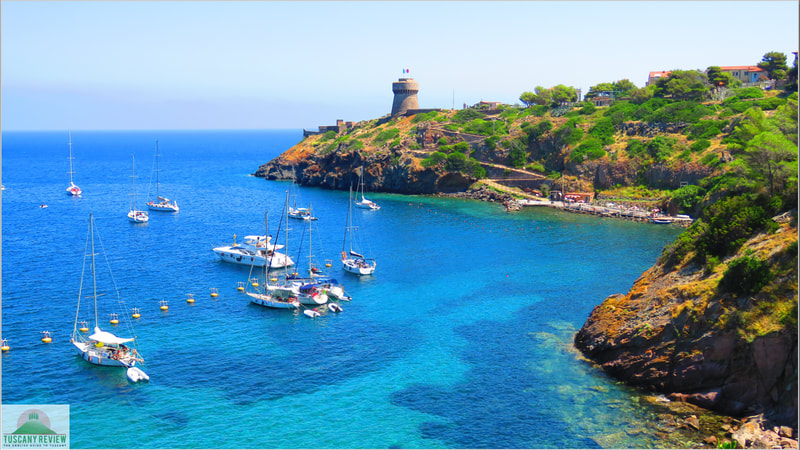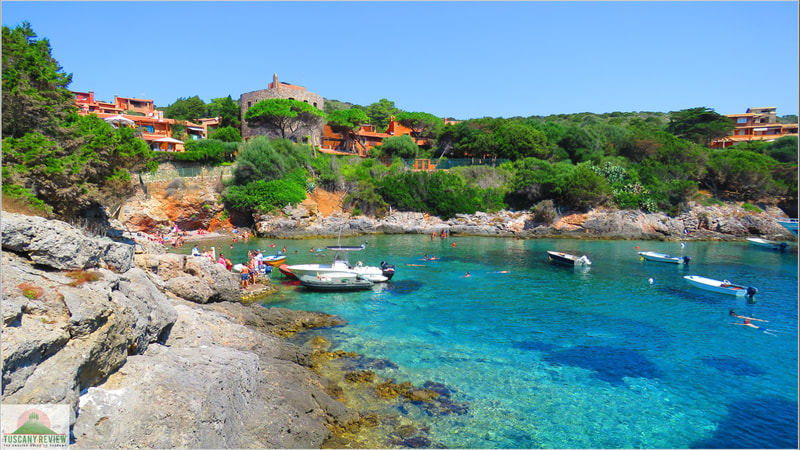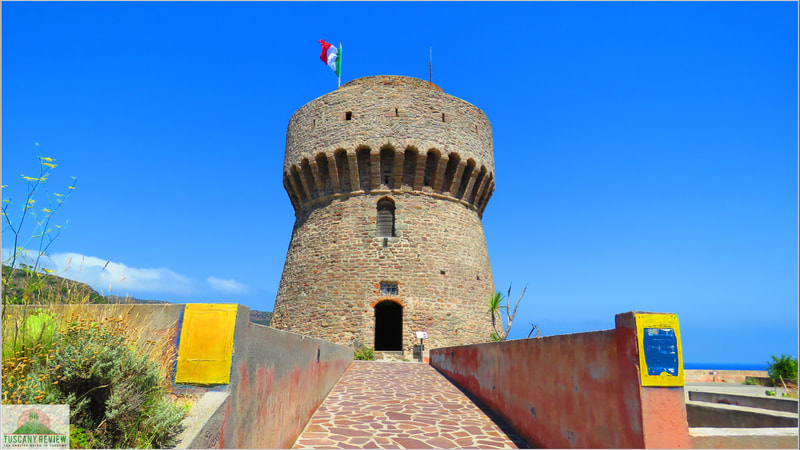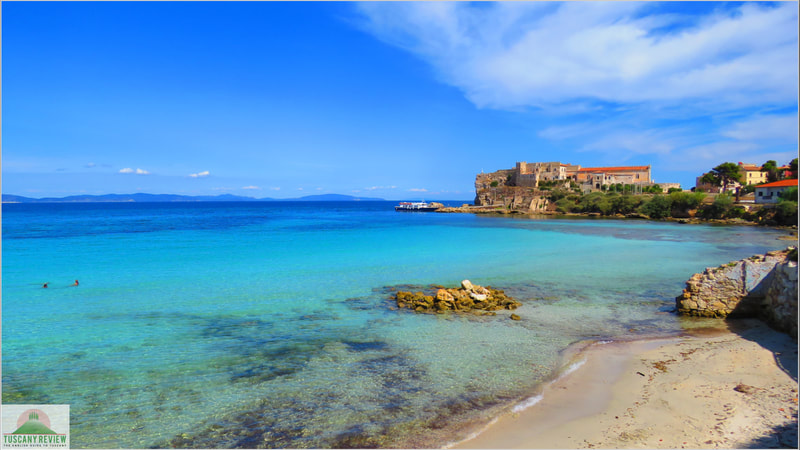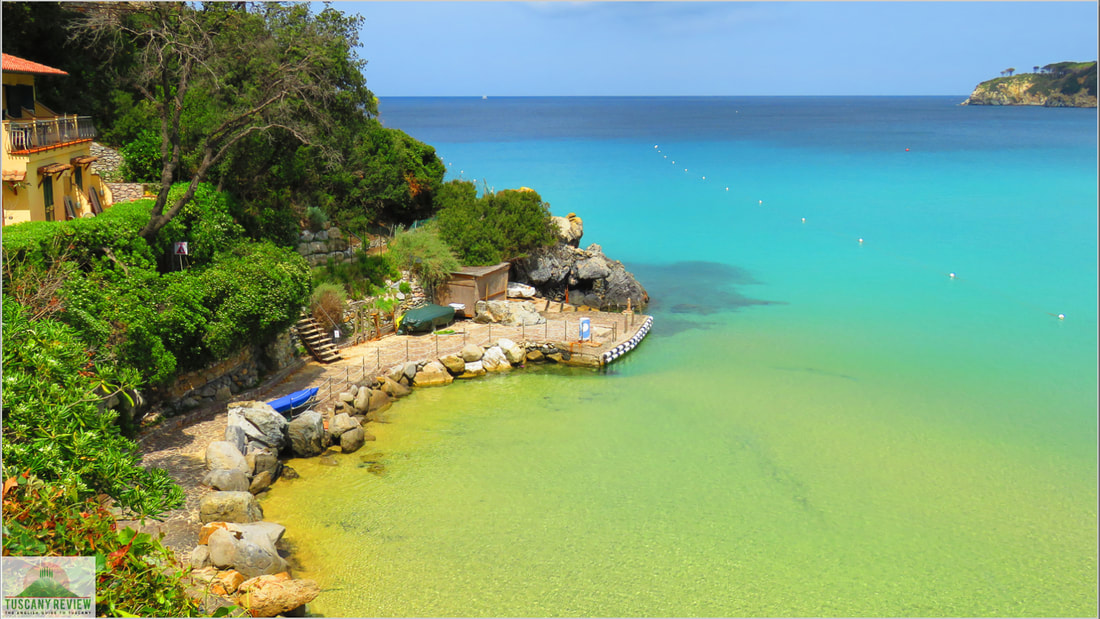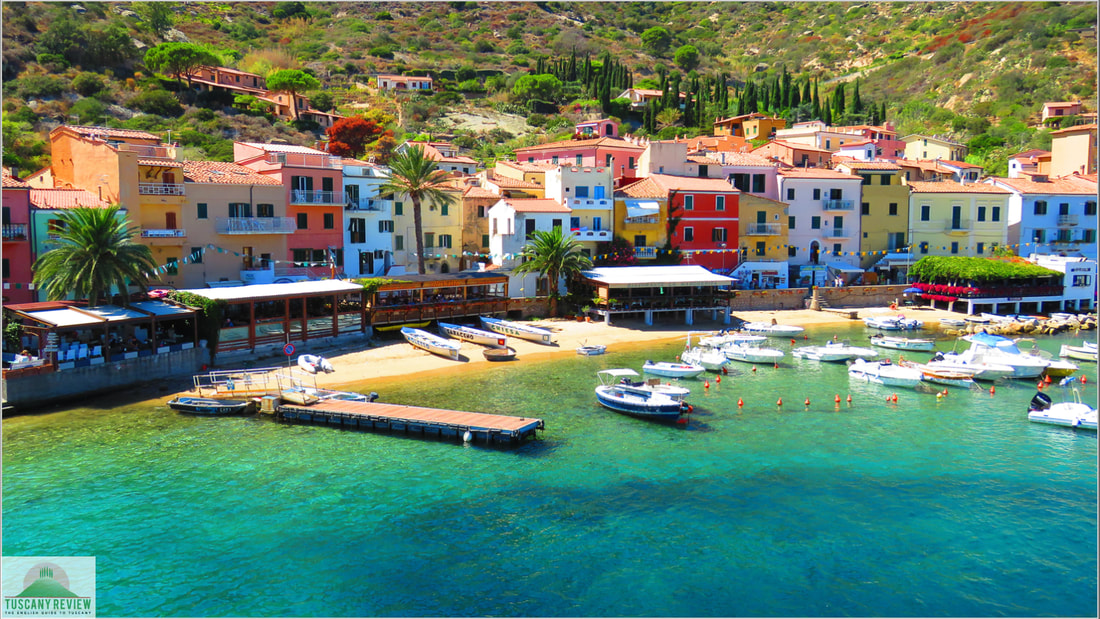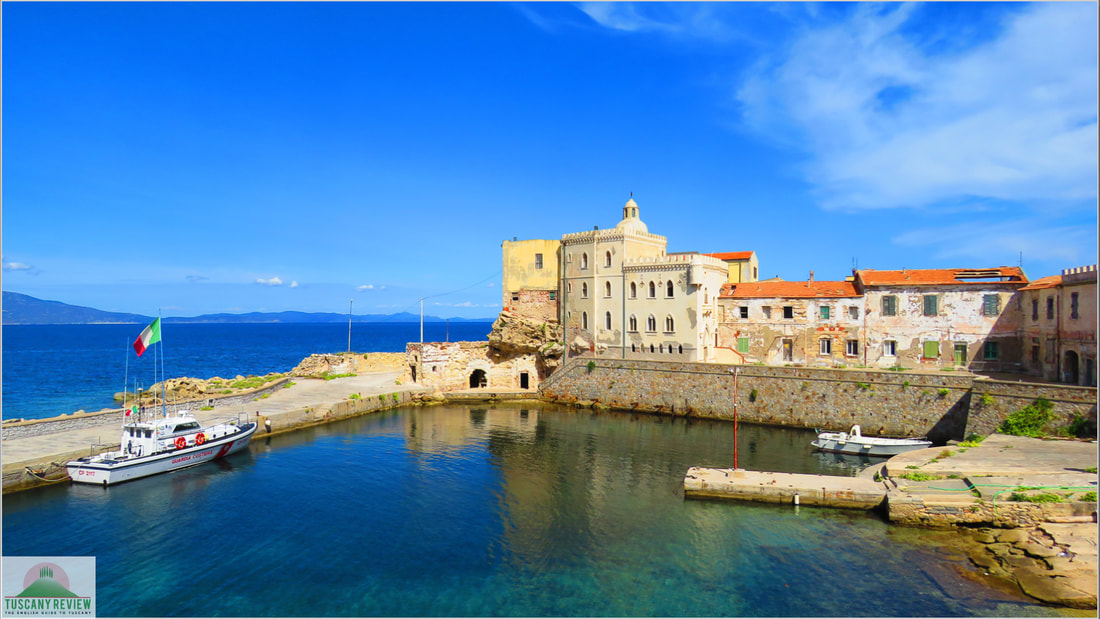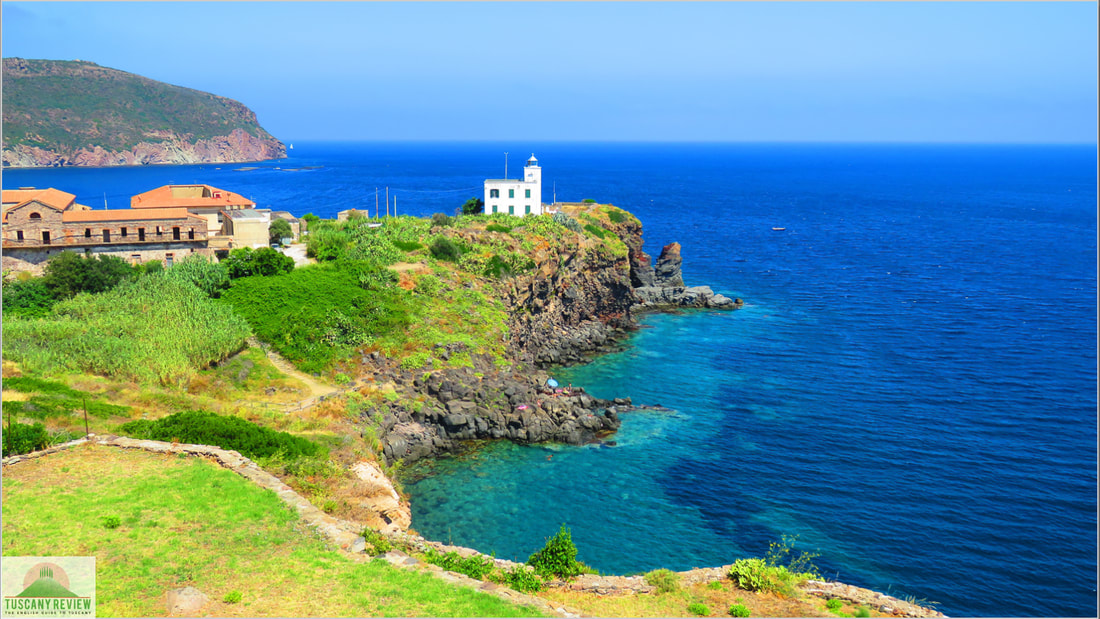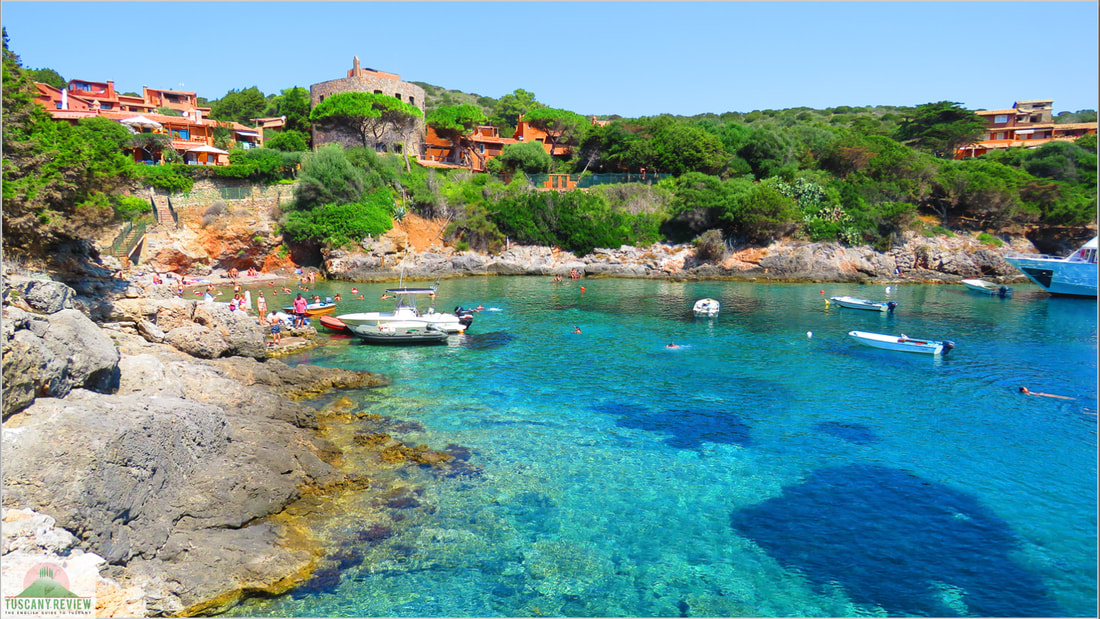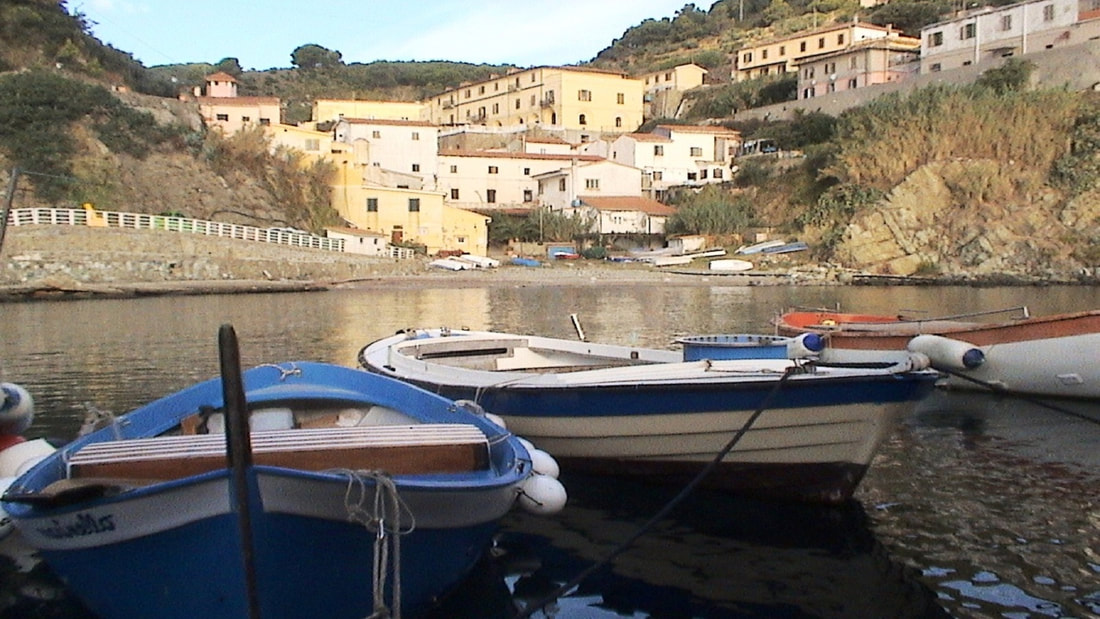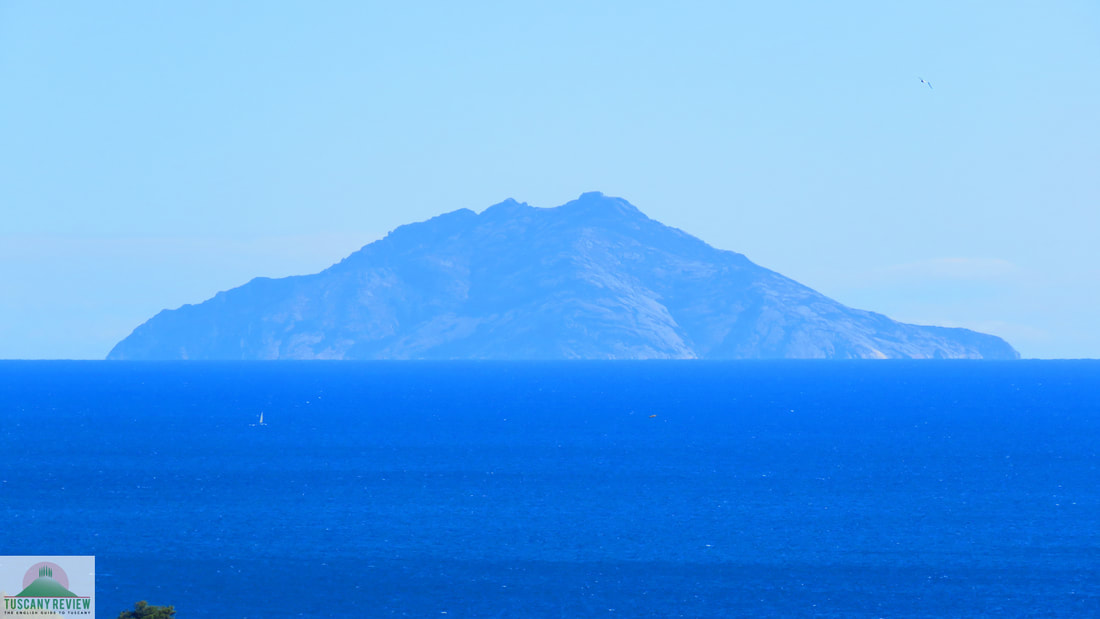Tuscan Archipelago
|
By Dion Protani
|
Latest update: 1 January 2024
|
|
The Tuscan Archipelago (Arcipelago Toscano) is a group of seven islands situated just off the coast of Tuscany, in the Ligurian Sea.
Also classified as the Tuscan Archipelago National Park, the island group is divided between two provinces: Livorno and Grosseto. The largest by far of the seven islands is Elba which is also the most densely populated, while two of the islands can only be visited with special permission; one because it's a nature reserve and the other one due to the fact it's a penal facility at present. |
Related links
Elba and Pianosa
Lying a short distance from the Tuscan mainland port of Piombino, Elba is the most visited of the seven islands. It's a major tourist destination with around 80 beaches and the fascinating port town of Portoferraio, the island's capital. Elba is divided into seven comunes (municipalities) of which Portoferraio is one and another is the pretty harbour town of Porto Azzurro on the south-eastern coast.
Elba belongs to the Livorno Province, along with the tiny island of Pianosa which lies south-west of Elba. The best way to reach Pianosa is via a day trip or organised excursion from Elba and it makes for a fascinating day out. Above, I mentioned a nature reserve and a penal colony of which Pianosa is currently one and used to be the other.
Large parts of the island are only visitable with a certified guide in order to preserve the island's natural environment, while the prison, now abandoned, does make for some interesting exploration. Just a short walk from the prison is a beautiful beach that creates something of a curious juxtaposition.
Elba belongs to the Livorno Province, along with the tiny island of Pianosa which lies south-west of Elba. The best way to reach Pianosa is via a day trip or organised excursion from Elba and it makes for a fascinating day out. Above, I mentioned a nature reserve and a penal colony of which Pianosa is currently one and used to be the other.
Large parts of the island are only visitable with a certified guide in order to preserve the island's natural environment, while the prison, now abandoned, does make for some interesting exploration. Just a short walk from the prison is a beautiful beach that creates something of a curious juxtaposition.
Montecristo, Capraia and Gorgona
Further south of Pianosa and still within the Province of Livorno is the island of Montecristo. You may be wondering if this is the same island as the one that takes centre stage in the book: The Count of Montecristo, and indeed it is. However, of the seven islands in the archipelago, this is the most difficult one to visit as it's an off-limits nature reserve.
On a clear day you can see it in the distance from the Tuscan mainland as well as from some of the other islands in the archipelago but that's about the best that most of us can hope for as things stand currently.
A similar distance from Elba but in the opposite direction, north, Capraia is the most remote of the island group's inhabited islands. It requires a ferry journey of just under three hours to reach which reduces its visitor numbers but makes it incredibly peaceful, even in the height of the summer season. Capraia has a small port town and some wonderful bays where the water is of the brightest azure colour.
Unless you want to deliberately commit a crime and hope you get sent to the right jail, Gorgona is another island that's off-limits as it's currently a prison facility. You can sneak a peek though if you catch the right ferry to Capraia, as some of them stop at Gorgona on the way. Gorgona is the fifth of the seven islands within the Livorno Province and the one that's closest to Livorno itself, the biggest port city in Tuscany.
On a clear day you can see it in the distance from the Tuscan mainland as well as from some of the other islands in the archipelago but that's about the best that most of us can hope for as things stand currently.
A similar distance from Elba but in the opposite direction, north, Capraia is the most remote of the island group's inhabited islands. It requires a ferry journey of just under three hours to reach which reduces its visitor numbers but makes it incredibly peaceful, even in the height of the summer season. Capraia has a small port town and some wonderful bays where the water is of the brightest azure colour.
Unless you want to deliberately commit a crime and hope you get sent to the right jail, Gorgona is another island that's off-limits as it's currently a prison facility. You can sneak a peek though if you catch the right ferry to Capraia, as some of them stop at Gorgona on the way. Gorgona is the fifth of the seven islands within the Livorno Province and the one that's closest to Livorno itself, the biggest port city in Tuscany.
Giglio and Giannutri
The final two islands lie further to the south in the Province of Grosseto, and can be reached by ferry from the seaside town of Porto Santo Stefano. Of these two islands, Giglio is the more popular and the larger.
It has an array of spectacular beaches, including two that I've placed among my best beaches in Italy list: Cala delle Caldane and Cala delle Cannelle. It can also boast one of the prettiest harbours in Italy with its arrival port called Giglio Porto, as well as a delightful hilltop borgo (historic village) of Giglio Castello.
The island shot to fame for all the wrong reasons in 2012 when it was the scene of the tragic Costa Concordia disaster when the enormous cruise ship sank just off Giglio's shores and 32 people lost their lives. It remains though, one of the most evocative islands in Italy to visit and well worth the short-hop from the mainland.
South-east of Giglio and also reachable by ferry from Porto Santo Stefano is the final island in the group: Giannutri. Although considerably smaller that Giglio, Giannutri has its own beauty, particularly at its main arrival bay called Cala Spalmatoio where the water is among the most spectacular in the whole region and irresistible for a refreshing summer dip.
It has an array of spectacular beaches, including two that I've placed among my best beaches in Italy list: Cala delle Caldane and Cala delle Cannelle. It can also boast one of the prettiest harbours in Italy with its arrival port called Giglio Porto, as well as a delightful hilltop borgo (historic village) of Giglio Castello.
The island shot to fame for all the wrong reasons in 2012 when it was the scene of the tragic Costa Concordia disaster when the enormous cruise ship sank just off Giglio's shores and 32 people lost their lives. It remains though, one of the most evocative islands in Italy to visit and well worth the short-hop from the mainland.
South-east of Giglio and also reachable by ferry from Porto Santo Stefano is the final island in the group: Giannutri. Although considerably smaller that Giglio, Giannutri has its own beauty, particularly at its main arrival bay called Cala Spalmatoio where the water is among the most spectacular in the whole region and irresistible for a refreshing summer dip.

